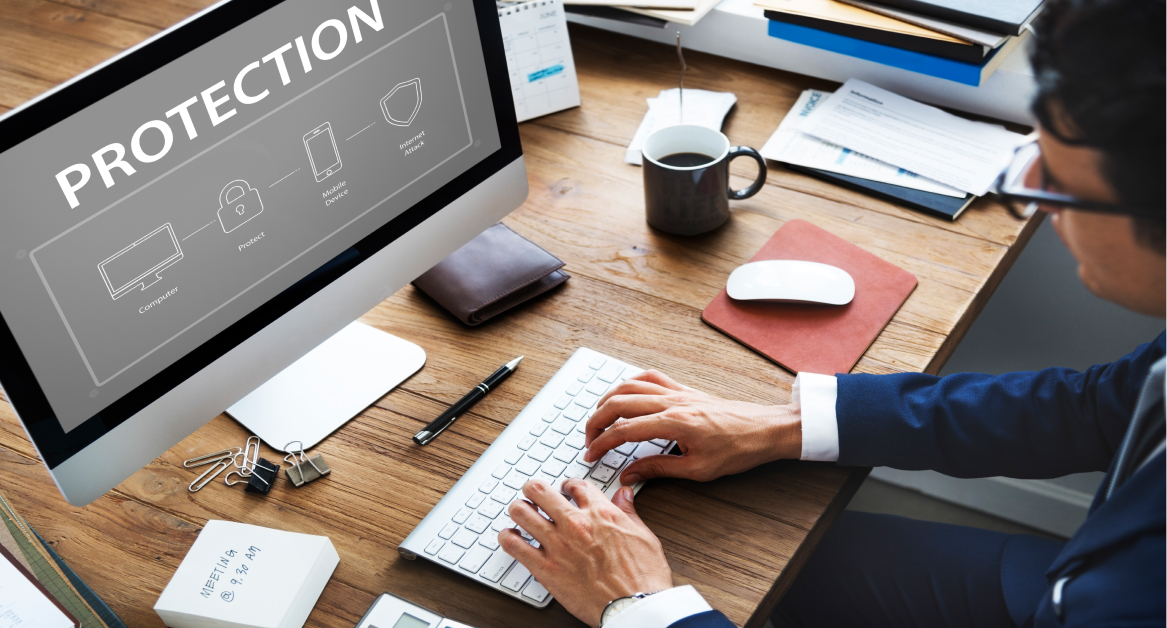Shipping laptops can feel like walking a tightrope—one wrong move and you face broken screens, battery hassles, or surprise costs. But with a smart, simple approach, you can ship a laptop FedEx without stress.
Getting this right matters. Laptops are expensive and fragile. Mistakes can lead to damage, insurance hassles, or delayed arrival. Whether you’re shipping across town or oceans, you want to protect your gear and your budget.
In this post, you’ll learn how to ship a laptop via FedEx while avoiding the biggest risks. We’ll cover cost factors, packaging tactics, regulations around lithium-ion batteries, and real tips every startup leader should know.
Understanding FedEx shipping costs
Before safely shipping a laptop, it’s smart to understand how FedEx calculates its pricing. Knowing the cost drivers upfront helps you avoid surprises and budget better for your shipment.
1. Distance matters
The farther your package travels, the more you’ll pay. FedEx divides shipping into zones, so a laptop sent from New York to California will cost more than one sent within the same state.
2. Weight vs dimensional weight
FedEx uses whichever is higher: the actual weight or the dimensional (DIM) weight. DIM weight is based on the package’s size, not just how heavy it is. For laptops, this often comes into play if you use a large box with a lot of space with additional cushioning material. This is why selecting the right shipping box is so important.
3. Packaging size
If you choose an outer box that’s too large, you’ll not only pay more because of DIM weight but also risk the laptop shifting around. FedEx recommends a snug but safe fit, leaving about three inches of room for bubble wrap or foam inserts on all sides.
4. Service level
FedEx offers multiple services depending on how fast you need your laptop delivered:
- FedEx Express Saver: 3 business days, more affordable
- FedEx 2Day: 2 business days, mid-range pricing
- FedEx First Overnight: next-day morning delivery, premium cost
For international shipments, options include International Priority and International Economy, each with different prices and time arrival commitments.
5. Declared value and insurance
Every FedEx shipment includes $100 in declared value coverage by default. If your laptop is worth more, you can increase that coverage for an additional fee. Keep in mind, declared value is not the same as full insurance—it’s FedEx’s maximum liability if something happens. For high-value laptops, consider adding extra coverage or using third-party insurance.
6. FedEx One Rate option
If your laptop fits into a FedEx Express One Rate box, you can pay a flat rate instead of worrying about DIM weight or exact distance. This can be a cost-effective choice for startups shipping laptops to new hires or clients, since the price is predictable and includes FedEx Express delivery speeds.
By understanding these cost factors—distance, size, weight, service level, and coverage—you’ll be able to make smarter decisions when shipping a laptop with FedEx.
Choosing and preparing packaging
Packing is the most important part of safely shipping a laptop. Even if you pay for the fastest FedEx service, poor packaging can still lead to a cracked screen or internal damage. Here’s how to do it right.
Use the original box when possible
The manufacturer’s original box is designed to protect the laptop during long transport. It usually includes custom foam inserts that fit the laptop perfectly. If you still have it, this is often your safest bet. Still, FedEx recommends over-boxing—placing the original box inside a slightly larger one with cushioning material around it—to reduce the risk of damage.
How to ship a laptop without the original box
If you no longer have the original box, don’t worry—you can still ship a laptop safely. Start by choosing an outer box that’s sturdy, corrugated, and big enough to leave at least three inches of space with additional cushioning on all sides. This space should be filled with bubble wrap or foam to absorb shocks. Avoid reusing worn boxes, as they may collapse during transit.
The box-in-box method
The safest way to ship a laptop without the original packaging is the box-in-box method:
- Wrap the laptop in a plastic bag to protect it from dust or moisture.
- Cover the laptop with bubble wrap or foam, at least two inches thick on all sides.
- Place it inside a smaller inner box, filling any empty space with packing materials like peanuts or foam inserts.
- Put that inner box into a larger outer box, again filling gaps with cushioning material.
This double layer of protection helps prevent movement and absorbs impact during handling.
What about accessories?
If you’re sending chargers, cables, or other accessories, wrap accessories in bubble wrap separately so they don’t scratch or press against the laptop. Place them in a different section of the inner box, separated by packing materials.
The H-taping method
Once the laptop and accessories are secured, seal the box with strong packing tape. Use the H-taping method: apply tape along all box seams—top, bottom, and edges—so the tape pattern looks like the letter “H.” This prevents the box from popping open if handled roughly.
Help from FedEx Office
If you’re unsure about your packaging, you can stop by a FedEx Office location. They sell laptop shipping boxes, foam inserts, and can even pack the laptop for you. While this adds a little cost, it greatly reduces the risk of improper packing and gives you peace of mind.
When you choose the right packaging method—whether using the original box, box-in-box, or FedEx Office services—you dramatically lower the risk of damage while keeping costs under control.
Labelling and preparing for shipment
Once your laptop is packed securely, the next step is labeling and preparing it for the actual journey. This may sound simple, but skipping small details here can delay delivery or increase the risk of damage.
Place the shipping label correctly
Always attach the shipping label to the top of the outer box. This makes it easier for FedEx scanners to read and reduces the chance of misrouting. Avoid placing the label across a seam or corner—stick it flat on a smooth surface. If your box has a “This End Up” symbol, align the shipping label on the same side to reduce confusion.
Mark special instructions
If you’re shipping a laptop that contains lithium-ion batteries, FedEx may require additional labeling. For most laptops, you’ll need a lithium battery handling label. This alerts handlers to take extra care and ensures compliance with international shipping rules.
Seal everything securely
Before you attach the label, double-check that all seams are sealed using packing tape. If you used the H-taping method, your box should already be reinforced. For extra safety, run your hands around the edges of the box to make sure no gaps are left open.
Prevent internal shifting
If you hear or feel movement when you gently shake the box, open it and add more cushioning material. Internal shifting increases the risk of damage, even if the box itself stays intact.
Drop-off vs pickup
FedEx offers both options. If you’re close to a FedEx Office or FedEx Ship Center, you can drop off the package yourself. For busy startup teams, scheduling a pickup can save time. Either way, keep your receipt and tracking number safe—you’ll need them in case of insurance claims.
Final checklist before shipping
- Clean the laptop and ensure no dust or debris remains before wrapping
- Ensure all accessories in bubble wrap are separated from the laptop
- Double-check the shipping label information (recipient name, address, contact number)
- Confirm you’ve declared the right value for insurance purposes

Taking a few extra minutes for these steps ensures your package leaves your hands fully protected and ready for a smooth delivery.
Safety, regulations, and pre-shipping steps
Shipping a laptop isn’t only about bubble wrap and packing tape. There are safety rules and smart pre-shipping habits that protect both the device and your business. Ignoring these steps can cause delays, extra fees, or worse—your laptop being held up at customs.
Lithium-ion batteries and regulations
Most laptops run on lithium-ion batteries, which are classified as hazardous materials. FedEx requires that they remain inside the laptop during shipment, but they must be properly labeled. If you’re shipping internationally, certain countries have stricter restrictions. Adding the required battery handling label helps avoid delays. For bulk laptop shipments, it’s wise to check FedEx’s Dangerous Goods guidelines or consult FedEx Office staff to ensure compliance.
Prepare the laptop before packing
Don’t just shut the lid and throw it in a box. A few minutes of prep go a long way:
- Back up important data to the cloud or an external drive
- Factory reset if the laptop is being transferred to a new employee
- Unplug any peripherals or dongles to prevent breakage
- Clean the laptop with a soft cloth so dust doesn’t get trapped under the packing materials
- Place the device in a plastic bag before wrapping to guard against moisture
Handle accessories the right way
If you’re including chargers, adapters, or accessories, wrap accessories in bubble wrap separately from the laptop. This prevents them from pressing against the device during transit. Store them in a different section of the inner box.
Declared value vs third-party insurance
FedEx automatically covers up to $100 declared value. But let’s be honest—most laptops cost much more. You can purchase extra coverage through FedEx, but some businesses also prefer third-party shipping insurance for broader protection. For startups equipping remote employees, adding coverage is a small price to pay to avoid the headache of replacing expensive hardware.
The double-check rule
Before sealing the box for good, double-check everything:
- Is the battery label attached?
- Is the declared value correct?
- Is the shipping label accurate?
- Are accessories wrapped and separated?
These checks take only a few minutes but reduce the risk of damage or loss significantly.
When you combine compliance with good pre-shipping habits, you’re not just sending a laptop—you’re sending peace of mind.
Cost examples and carrier comparison
Now that you know how to pack and prep, let’s talk numbers. Shipping a laptop via FedEx can vary widely depending on service level, distance, and packaging. Here are some real-world examples that help set expectations.
Domestic FedEx examples (based on a 5 lb laptop, New York to Los Angeles)
- FedEx Express Saver (3 business days): around $61–$63
- FedEx 2Day (2 business days): around $75–$77
- FedEx First Overnight (next business morning): about $169+
International FedEx examples (5 lb laptop, US to UK)
- FedEx International Economy: around $209
- FedEx International Priority: around $232
- FedEx International First: close to $287
These estimates are drawn from recent shipping calculators and represent ballpark figures. Rates may change slightly based on your exact box size and declared value.
Shipping from Europe to Asia is increasingly common as companies expand into global markets and equip remote teams across regions.
- London (UK) → Singapore
- International Economy: ~£185–£195
- International Priority: ~£210–£225
- Added customs handling due to cross-continent shipping
- Common route for UK startups with Southeast Asian partners
- FedEx reliability ensures safe delivery despite time zones and regulatory checks
- Berlin (Germany) → Tokyo (Japan)
- International Economy: ~€190–€200
- International Priority: ~€215–€230
- Strict customs clearance and high packaging standards in Japan
- Preferred by European businesses supporting Asian teams
- Higher costs offset by reduced risk of delay and smooth clearance for sensitive devices
These examples highlight that while FedEx rates between Europe and Asia are broadly comparable to US-to-Europe shipments, businesses should be mindful of regional variations. Asia’s diverse regulations—whether battery labeling requirements in Japan or import duties in Singapore—can affect both pricing and delivery time. For companies managing distributed teams across the UK, Europe, and Asia, planning for these factors is crucial. By building awareness of FedEx’s regional pricing, startups and enterprises alike can budget more accurately, avoid unpleasant surprises, and keep employees equipped no matter where they are.
Comparison with other carriers
- UPS: Similar to FedEx for express services, sometimes a few dollars cheaper for ground.
- USPS: More affordable for smaller domestic shipments but slower and less predictable for laptops, especially if you need guaranteed time arrival. USPS Priority Mail for a similar laptop runs around $25–$45, but coverage and handling are limited compared to FedEx.
When flat-rate makes sense
If your laptop fits into a FedEx Express One Rate box, you can avoid dimensional weight charges. For startups regularly provisioning devices to remote hires, this predictable flat pricing can simplify budgeting.
Tips to save on shipping laptops
- Ship early with FedEx Express Saver instead of last-minute overnight
- Use a snug box to avoid paying for wasted space with additional cushioning
- Consider batch shipping multiple laptops to reduce per-device cost
- Always compare rates with UPS and USPS before committing—especially for international shipments
By looking at actual costs and options, you can make smarter choices. FedEx tends to shine when you need reliability, predictable delivery times, and strong coverage for high-value items like laptops.
Shipping a laptop doesn’t have to be stressful or expensive. By understanding FedEx shipping costs, choosing the right packaging, and following battery and labeling rules, you can minimize the risk of damage and avoid surprise fees.
Here are the essentials to remember:
- Always select the right shipping box and leave space with additional cushioning
- Use bubble wrap or foam inserts to protect the device and accessories in bubble wrap separately
- Seal with packing tape using the H-taping method
- Add a shipping label on top and double-check all details before sending
- Follow lithium-ion battery regulations and declare the right value for insurance
- Compare FedEx services with UPS and USPS, and consider One Rate boxes for predictable pricing
Beyond shipping: How Esevel powers global IT for remote teams
For startup founders and CIOs, safely shipping a laptop is just one part of the bigger IT challenge—especially when teams are remote or hybrid. That’s where Esevel comes in. Instead of worrying about packing materials, FedEx Office runs, or tracking deliveries, Esevel helps you ship laptops and accessories to employees worldwide with ease.
From device procurement and global delivery to IT support and security management, Esevel centralizes all your IT needs into one powerful platform. So, while FedEx ensures your laptop arrives safely, Esevel ensures your entire distributed workforce is equipped, supported, and secure—wherever they are.







